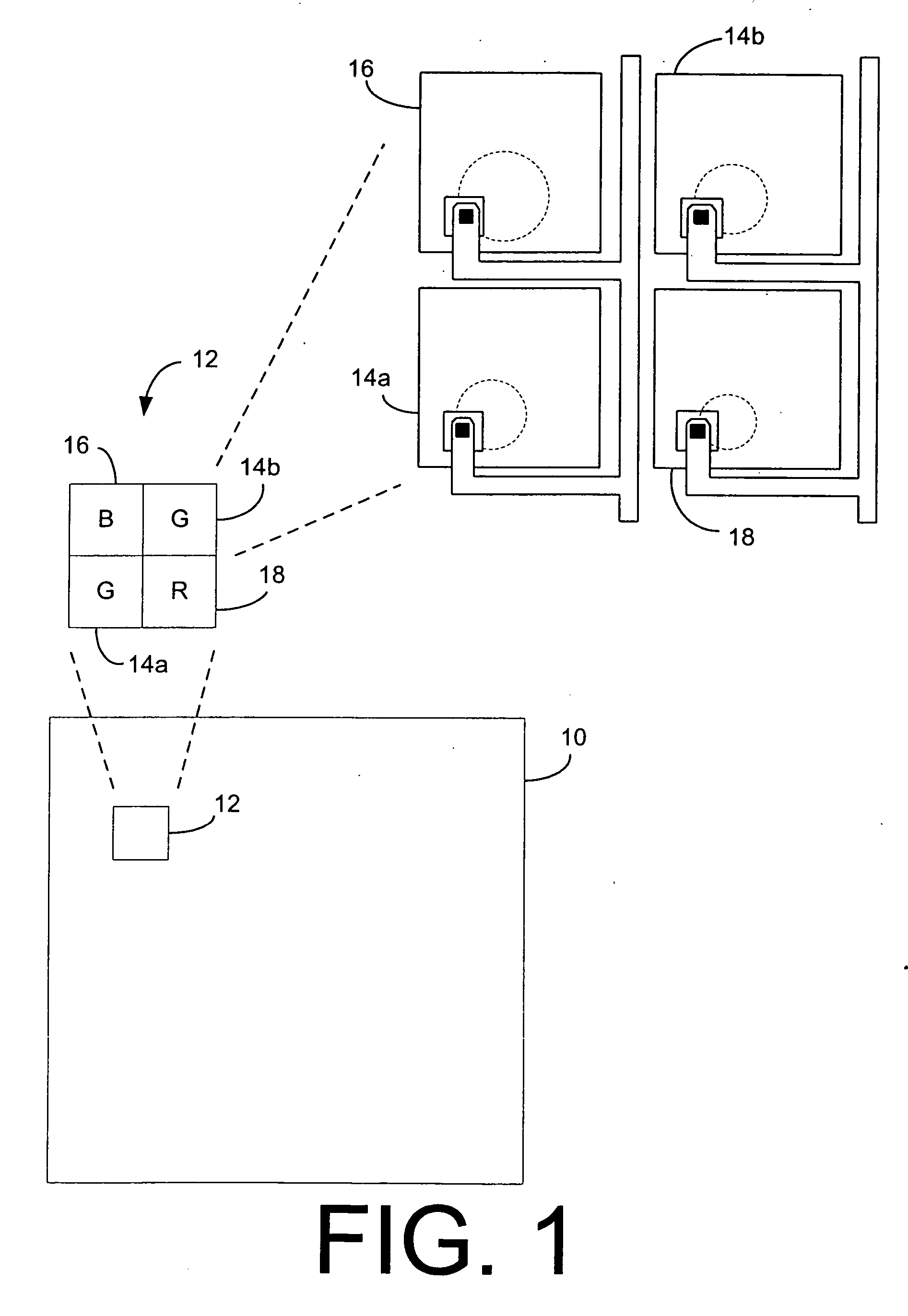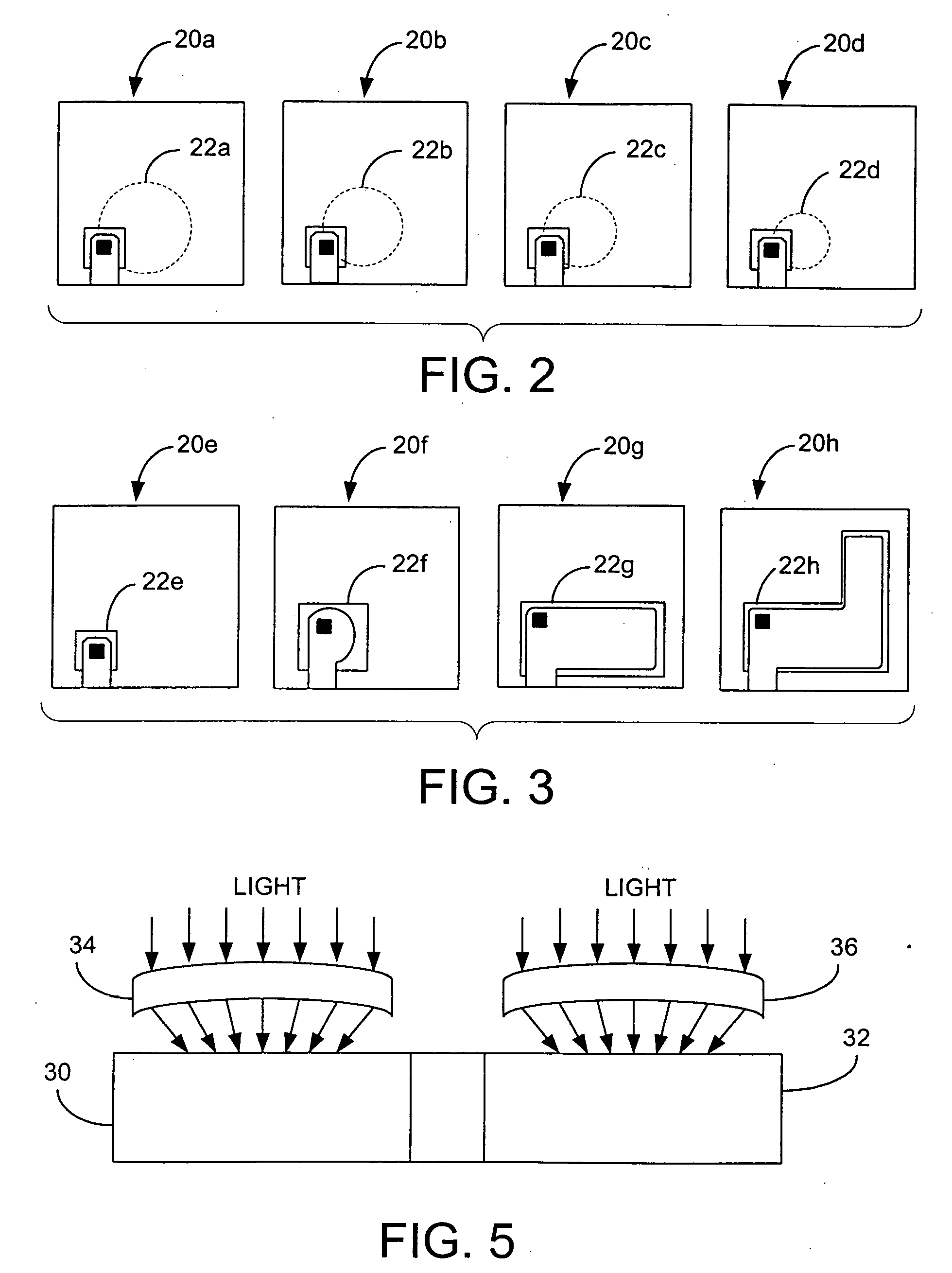Pixel optimization for color
a color image sensor and optimization technology, applied in the field of image sensors, can solve the problems of increasing requiring increased space, and having no effect on the difference in s/n, so as to increase the cost of the imager and increase the space
- Summary
- Abstract
- Description
- Claims
- Application Information
AI Technical Summary
Benefits of technology
Problems solved by technology
Method used
Image
Examples
Embodiment Construction
[0014] An embodiment of a color imaging system 10 in accordance with the teachings of the invention is shown in FIG. 1. The color imaging system 10 includes an array of macro pixels 12, each converting received light into an electrical output signal. Each macro pixel 12 is preferably comprised of two green pixels 14a and 14b, a red pixel 18, and a blue pixel 16 that are configured in a Bayer pattern. Although a Bayer pattern pixel configuration is preferable, other pixel configurations that include two or more different color pixels including non-primary colors may be used.
[0015] The output signal of each color pixel is described by the following equation:
Vnαphin*Tn*An*etan*Gn
where n=1, 2, 3 . . . is the spectral band (e.g., 3 bands in the case of RGB), phin is the flux per unit area of each pixel, Tn is the transmission of each spectral band filter, An is the collection area of each pixel, etan is the quantum efficiency of each pixel, and Gn is the conversion gain of each pixel...
PUM
 Login to View More
Login to View More Abstract
Description
Claims
Application Information
 Login to View More
Login to View More - R&D
- Intellectual Property
- Life Sciences
- Materials
- Tech Scout
- Unparalleled Data Quality
- Higher Quality Content
- 60% Fewer Hallucinations
Browse by: Latest US Patents, China's latest patents, Technical Efficacy Thesaurus, Application Domain, Technology Topic, Popular Technical Reports.
© 2025 PatSnap. All rights reserved.Legal|Privacy policy|Modern Slavery Act Transparency Statement|Sitemap|About US| Contact US: help@patsnap.com



